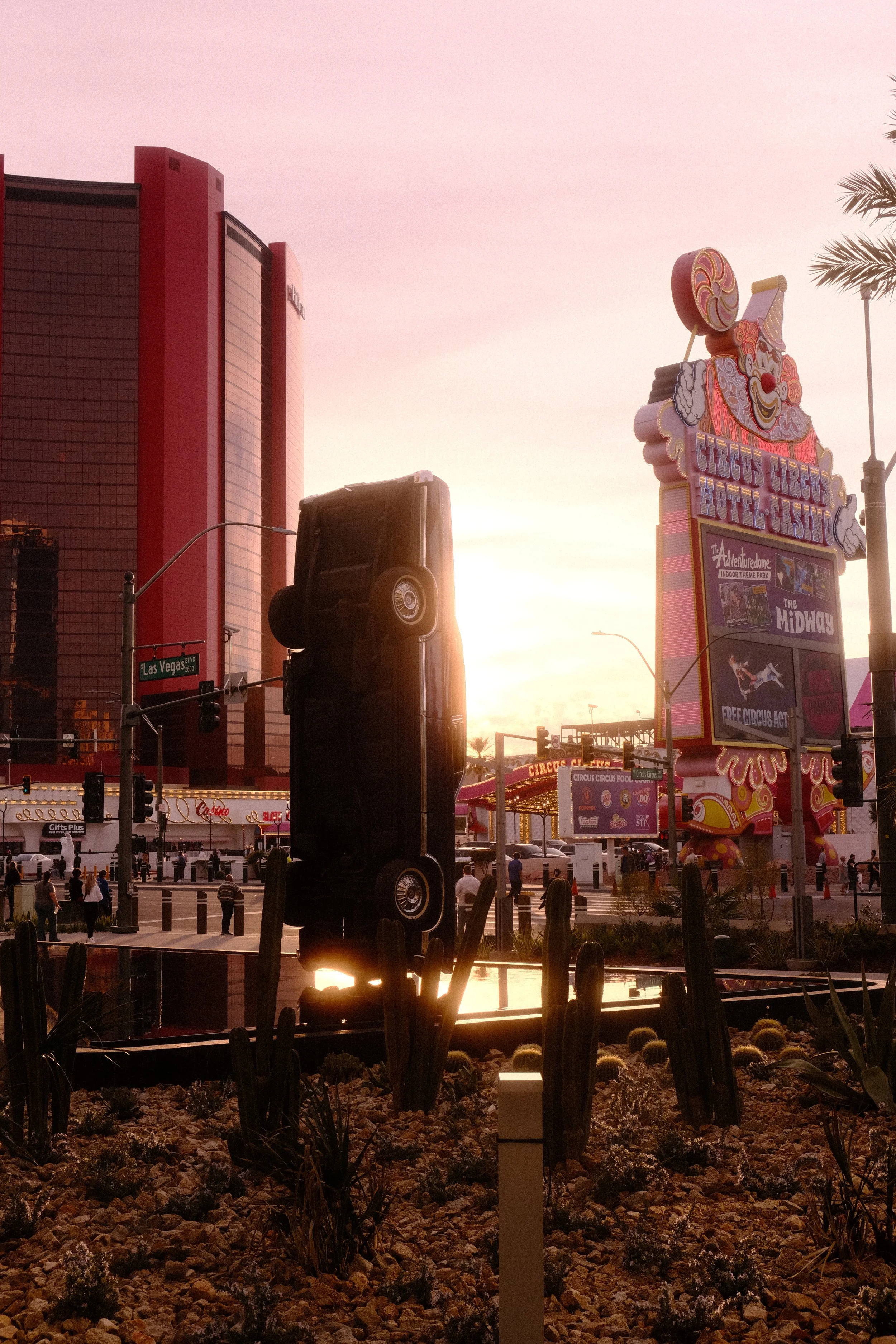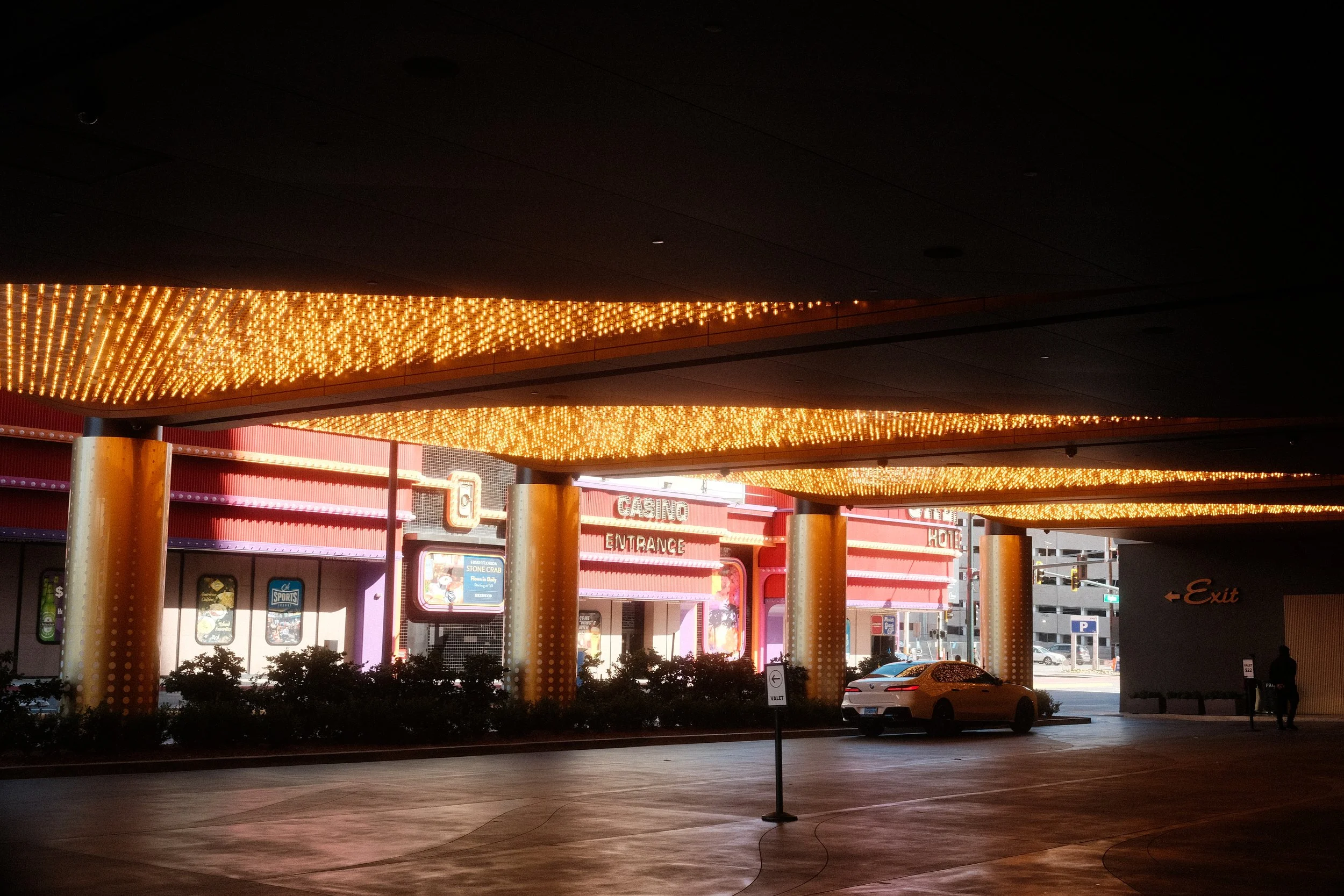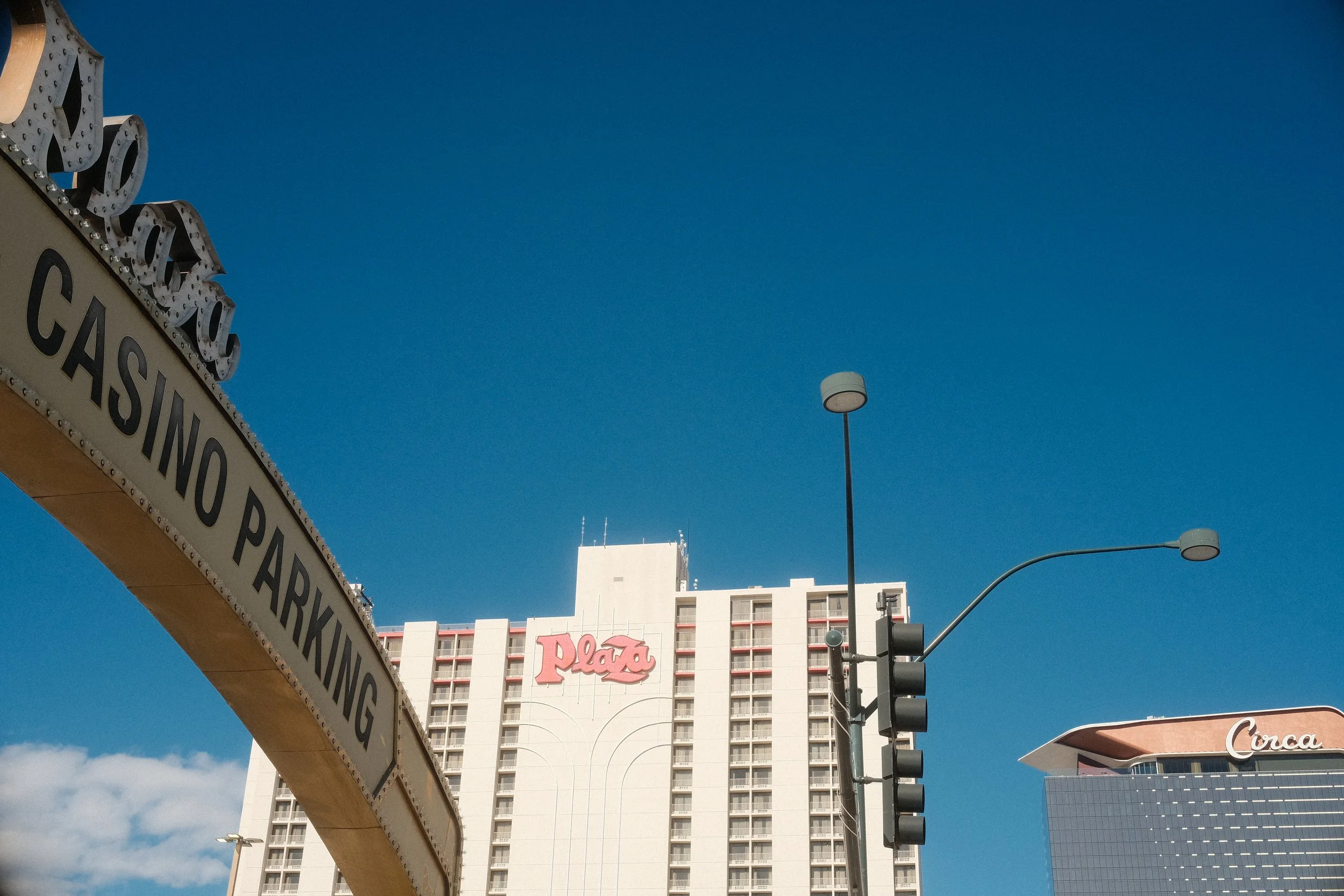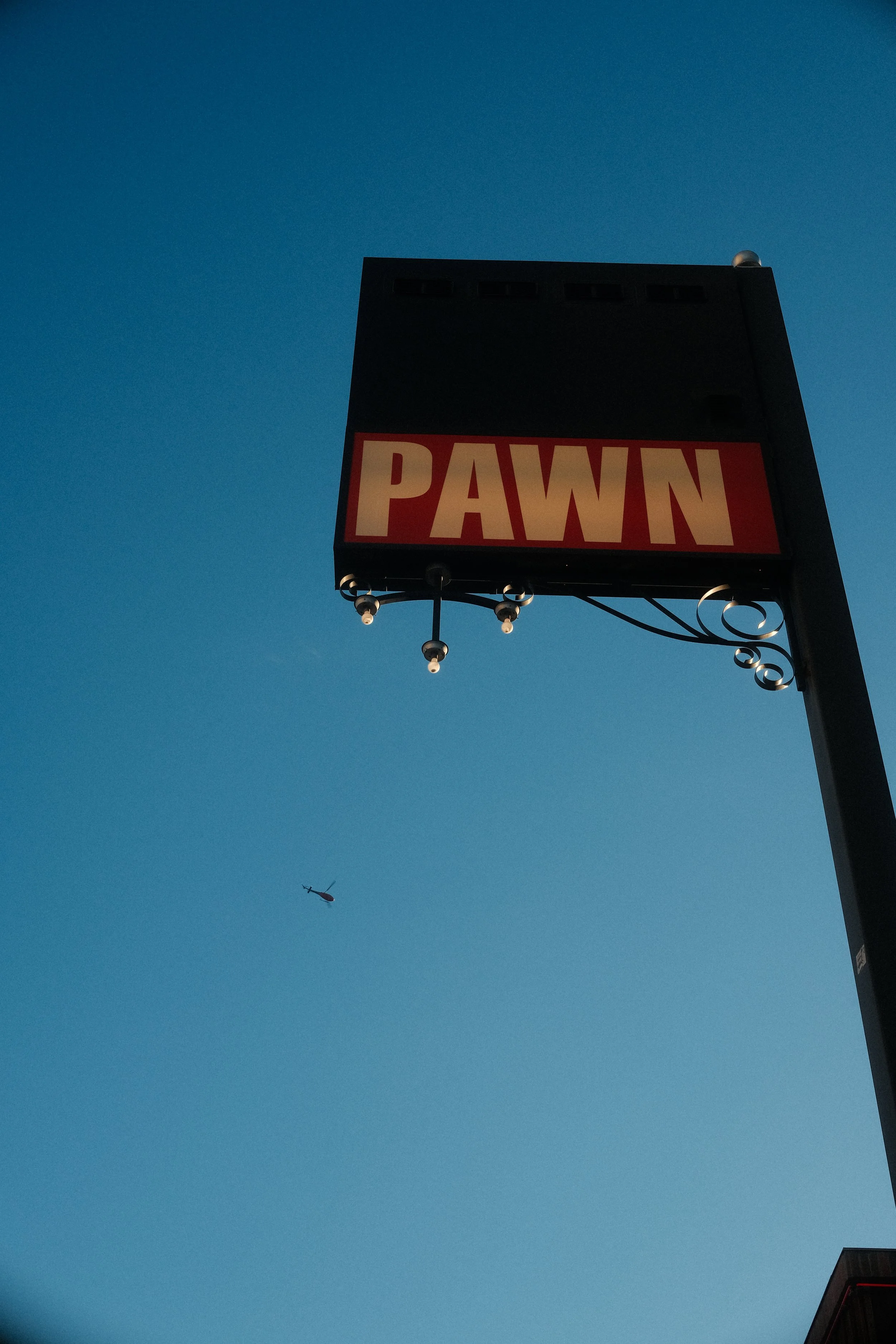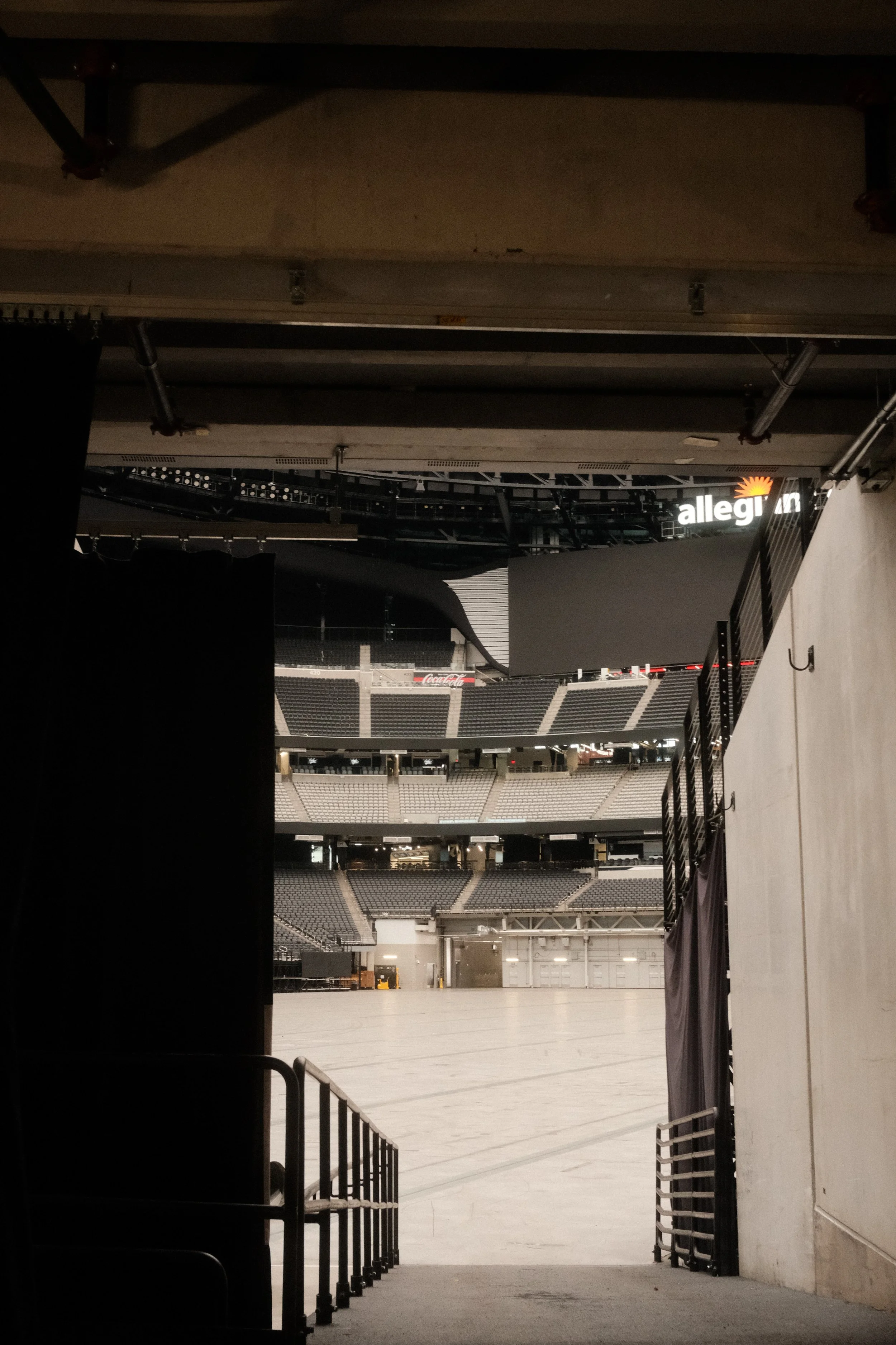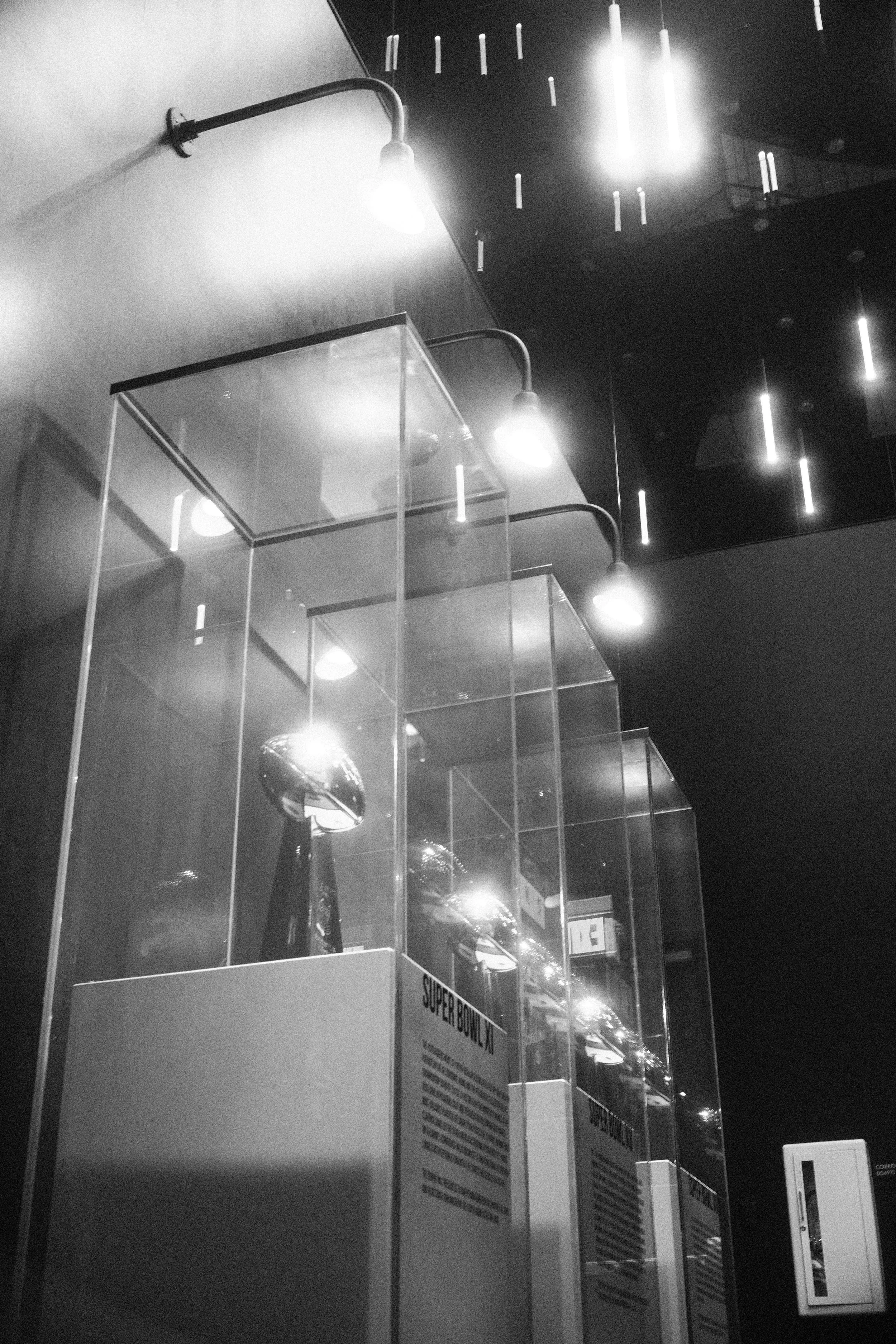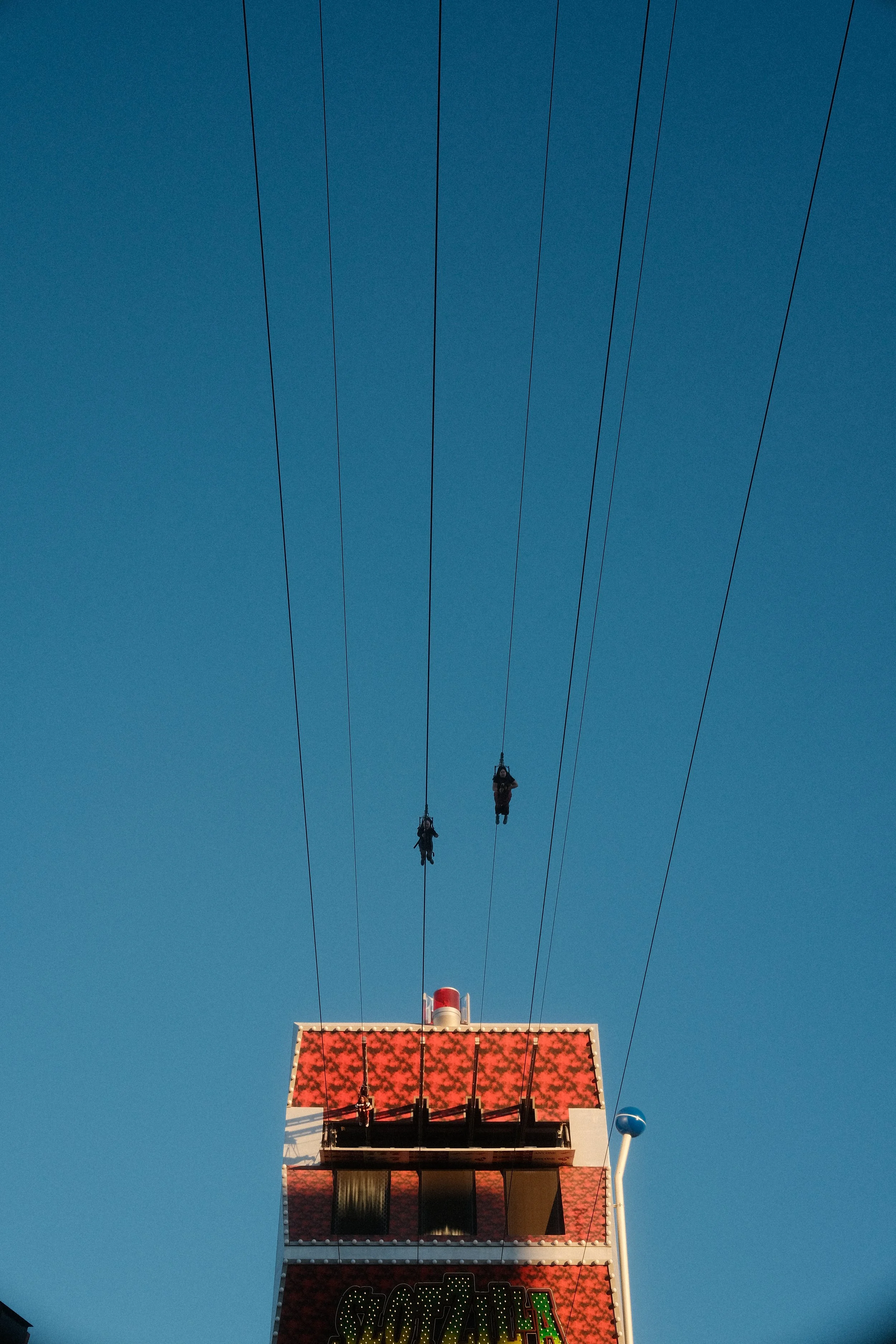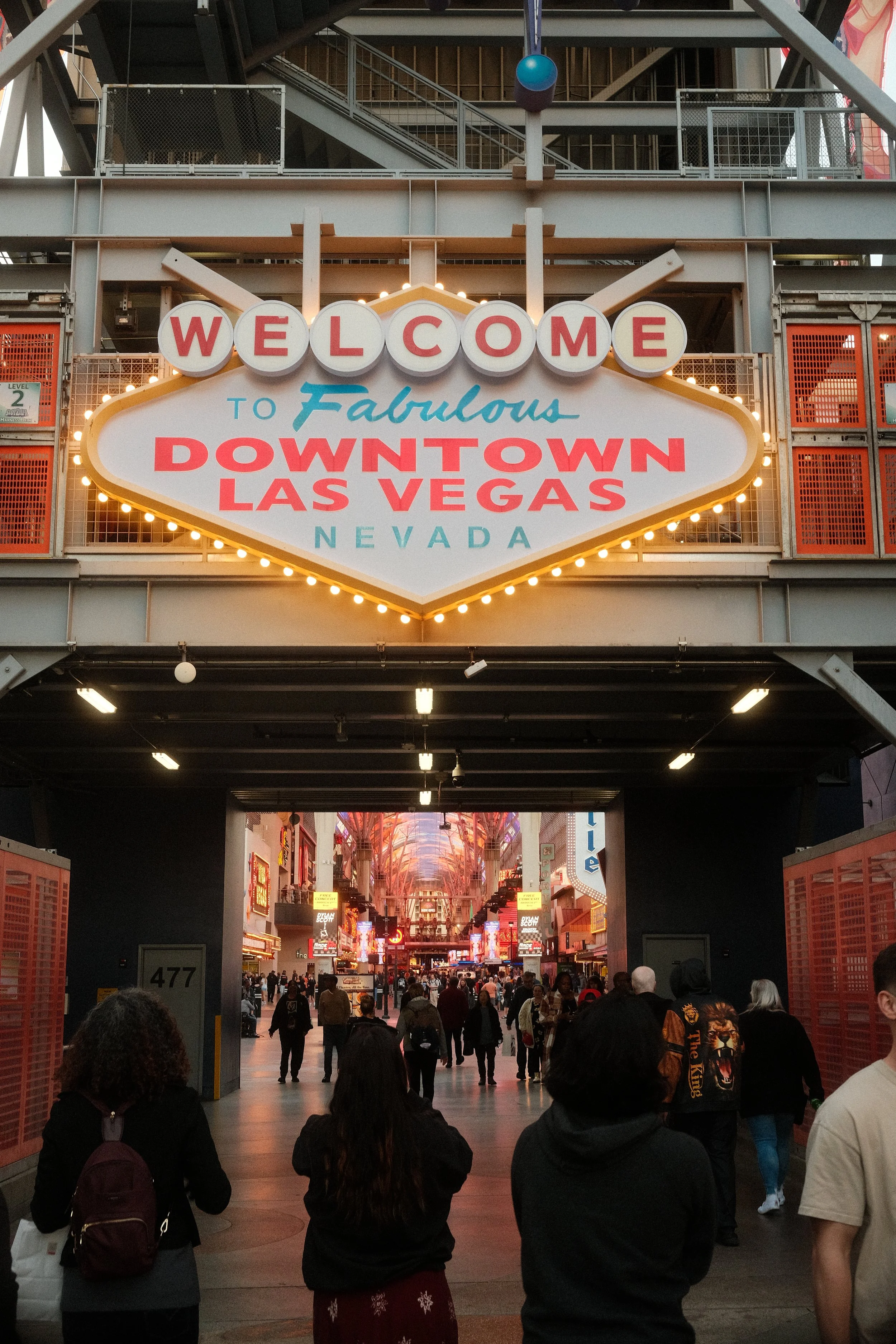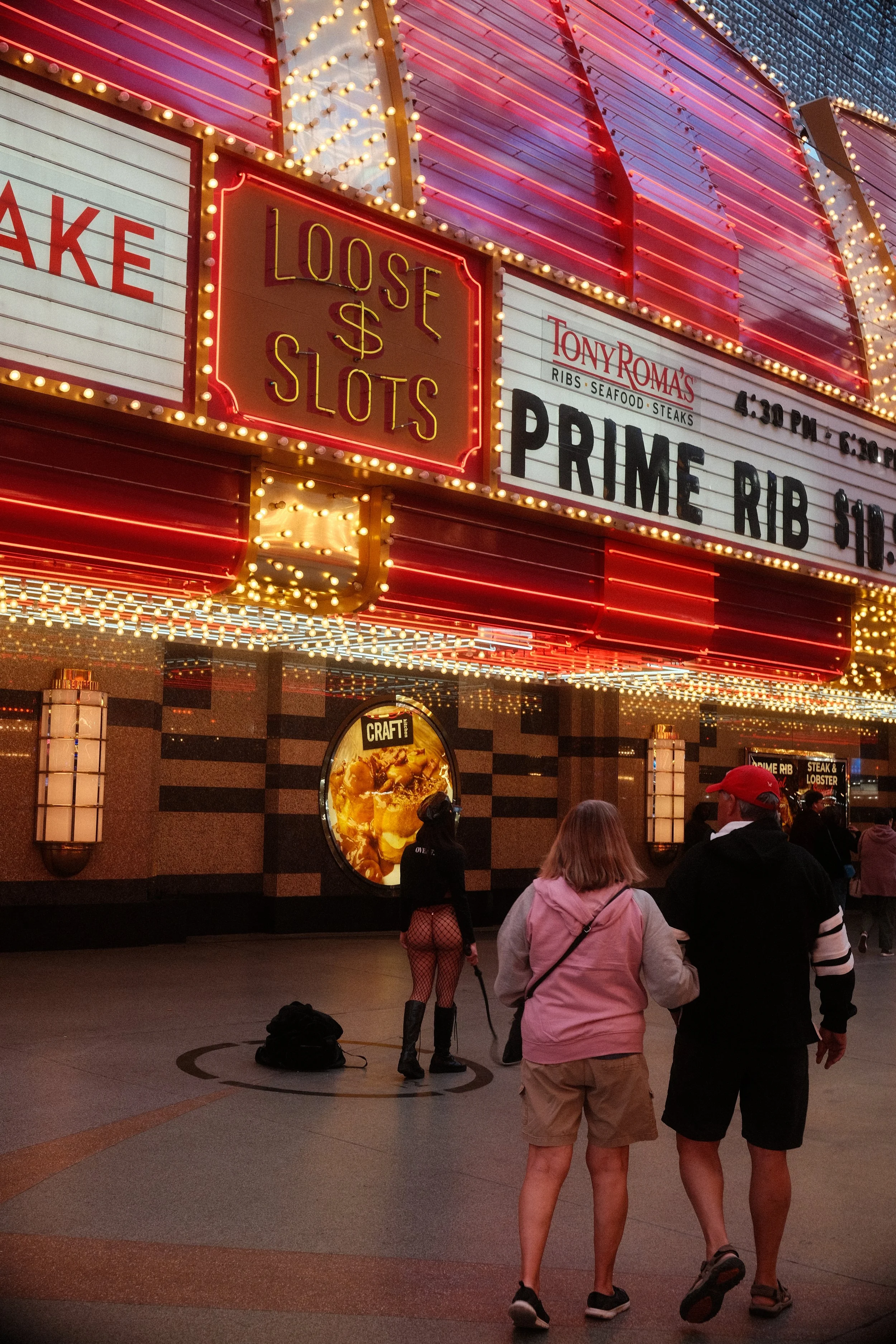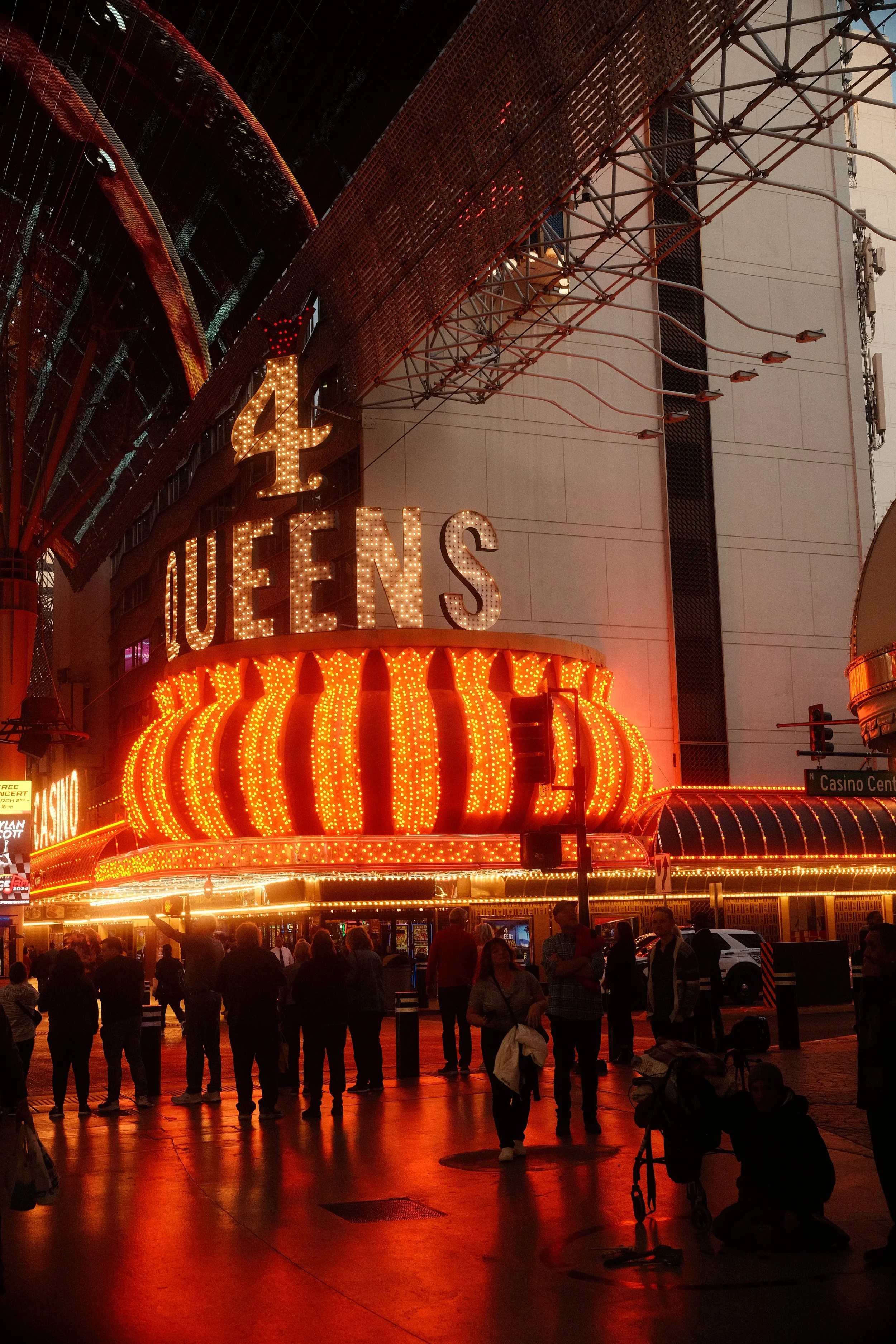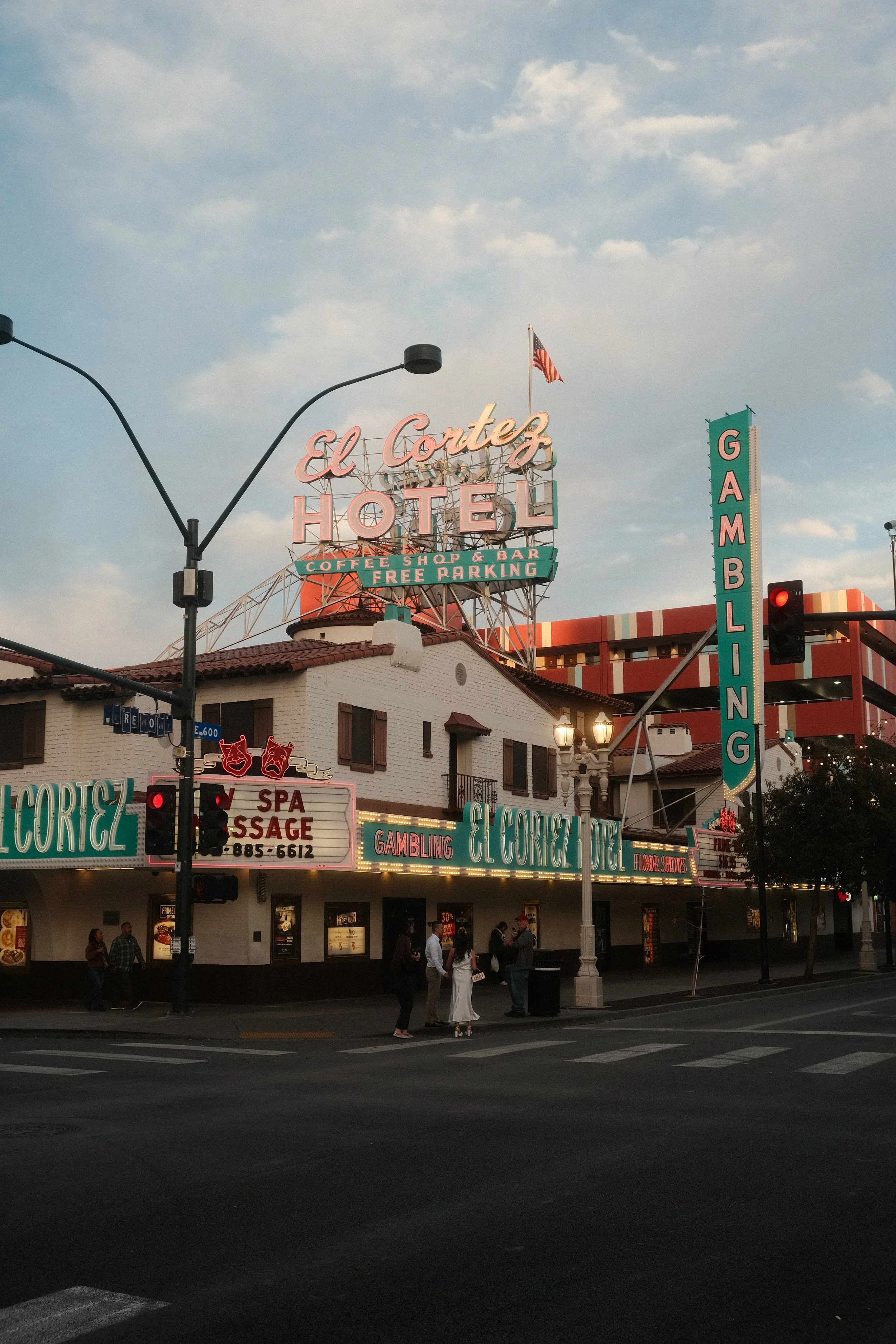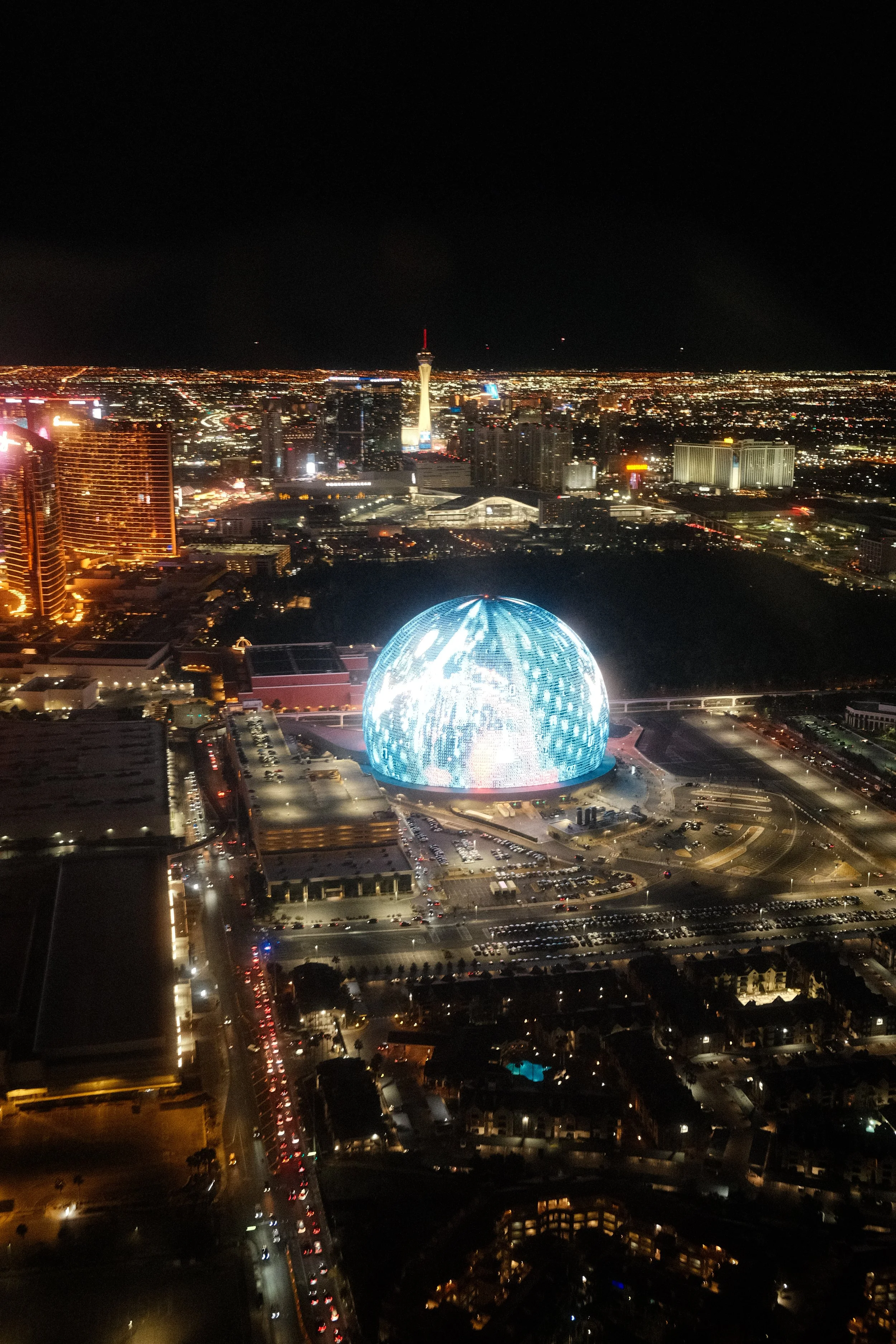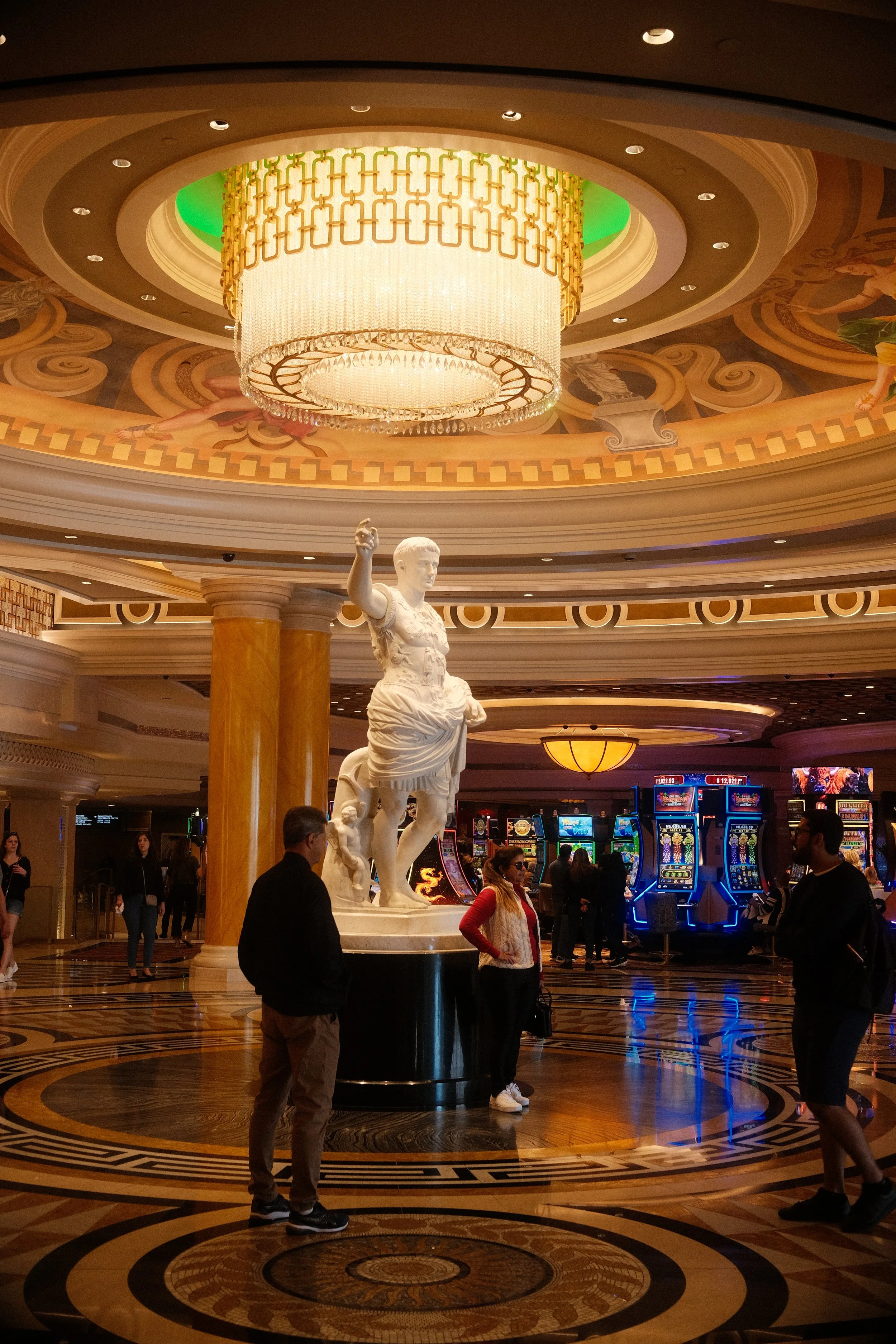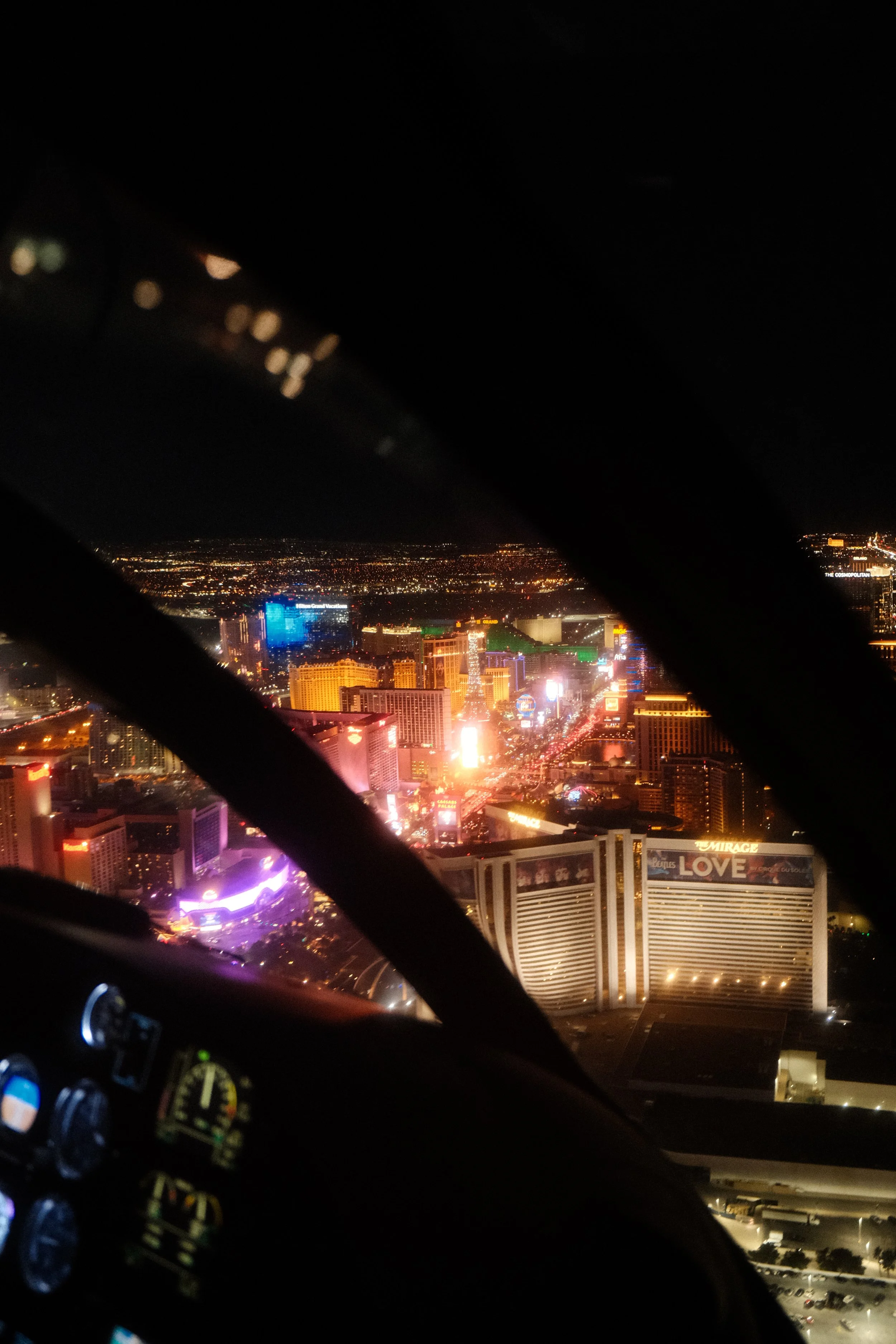Loving Vegas
FIRST PUBLISHED: THE SPECTATOR (EDITED DOWN) (MAY 15TH 2024)
After 10 hours of flight, 22 hours awake, 8 hours’ time difference, and too much bad airplane coffee, the beef carpaccio from 8 East at The Circa casino was ecstasy. Topped with potato crisps, served with drops of citrus-infused wasabi crème, succulent and delicate, it would have been fabulous anywhere, anytime. But nursing a cold Sapporo, stoned on exhaustion and discombobulation, shivers ran up and down my legs and forearms with every bite. Just a single piece would have been worth the flight.
It was my first time in Vegas — my first time in the States — and I was hoping to write a meaningful piece about somewhere that many have written too much about and said too little. In the months before, I read and was recommended all the famous titles — The Green Felt Jungle, Learning from Las Vegas, Leaving Las Vegas, the James Patterson-branded, Mark Seal book What Really Happens in Vegas, and the one you all know — and in each case, the Vegas in ink is a city of cliches. And it’s not surprising. If you want to find them, Vegas will easily supply.
As I walked through the Circa, heading to my room, I passed a bride in Panda Dunks running to the craps table; a group of guys in tight-fitting polos, confidently strolling into the lobby, beginning a night to end long past sunrise; an elderly Asian man spamming the pokies button as he filled the New York Times crossword on his phone, held in his other hand. On the casino floor, there were dancing dealers in low cut blue outfits, the 165 foot long ‘megabar,’ a neon cowgirl sign, and thick black curtains to block the movement of the sun, and flashing gaming machines of all lights, screens showing all sports, and potential winnings of seemingly endless varieties of digits. And playing over it all, a soundtrack of 2010s pop. It’s all about the money, money, money.
Vegas can be easily defined by the tropes, if you so wish, but it’s just one face of it. Paris asserts itself as Parisian. Vegas is a mirror, or prism, that changes based on where you see it from. It's a jackpot for gamblers, a theatre for couples, a theme park for families, a watering hole for boozers, an endless buffet for foodies. To write about Vegas is like trying to summarize the contents of Instagram just by reviewing your own feed; or describe the appearance of a fun-house mirror. As a PR rep, Chelsea, would tell me some days later — as we sipped an Apple Pie Harvest at the best cocktail bar in town, Oak & Ivy in Downtown Container Park — “Everyone who visits Vegas is the protagonist.”
I ended that first night sipping champagne on the Circa’s rooftop bar. It’s an astonishing view through the glass railing. Freemont Street, or Glitter Gulch, the birthplace of Vegas neon, glows brighter than ever below. Trailing headlights snake along Interstate 15, which has brought people past here since the early 1990s, as they drove from California to Salt Lake City. Surrounding us is a sea of orange and blue speckle lights; and ahead, is the bold, strange outline of the strip.
But more than the view, I was struck by the sound. Sitting above it all, the ambient sounds of the city echo around you; the distant footfall and music, the chopper overhead (as there always is), the dance tunes drifting from nearby speakers; the taxis whizzing along the freeway. It’s a soft cacophony; the unintentional, emergent atmospheric jazz of Las Vegas.
That first night was a constant daze, floating from the world’s biggest Sports Book to rooftop bar and hotel suite. At the time, I thought it must be the jetlag; but that strange buzz that makes everything brighter and louder and more colorful lasted the whole trip. Vegas is about the buzz.
The next morning was warm and bright, and with brunch reserved in the Arts District, only half an hour or so from the Circa, I threw on my biker jacket and walked there.
Aside from a few businessmen talking into phones, and bums sleeping in the sun, it was quiet out. Daylight hours in Vegas are like the winter season in a tropical holiday spot. Everything dormant and quiet, with a few construction trucks trundling past, and the occasional worker starting to prepare for the tourists to come. It’s a nocturnal town, which only rouses when the suns sinks and lights click on. As I walk, the sun harshly glints off everything. An endless flatbed train trundles past me, carrying tanks and military trucks into the distance. The horizon is a ring of blue mountains.
Were I to have walked this route until recently, I would have been greeted by nothing but dusty garages and a few antique stores. But Vegas changes quickly. Today, the Arts District is a bougie, thriving spot for locals, with cafes, restaurants, breweries and bars of every gimmick, far from the tourist kitsch of the Strip and Downtown that surround it. There’s a woman-owned skate shop, a rockabilly hair salon, the JRNY NFT gallery — “WHERE PHYSICAL AND DIGITAL WORLDS COLLIDE” — and a café that hires individuals with all disabilities, Dig It! On the corner of South Main Street and East California Avenue, a man in a yellow cap and jean jacket plays saxophone, and a few doors down is my brunch spot, Ether’s Kitchen.
Like many moving or returning to Las Vegas, founder James Trees had escaped the high-rents of LA, and sought to make a restaurant in his home town, catered not for the transient strip crowd but more for locals, with a focus on quality cooking over flashy gimmicks. The food — seasonal Italian cuisine, inspired by the cooking Trees grew up with — is a nostalgic fantasy of home cooking, with beautiful sourdough with burrata to start, perfect Rigatoni Carbonara (all pastas made entirely in house), and an incredible mezcal cocktail on crushed ice. The place is decorated in a rustic, homey way and some of the staff wear its merch, including a fitted Dodgers cap — for Chef Tree’s favorite team — but with the ‘A’ flipped to a ‘V,’ and their signature asparagus graphic on the side. A fellow diner asked where you could buy one. You can’t. Like all the Esther’s Kitchen merch, it’s just made for his team. I still want one of those caps though.
A few weeks after it left, it moved to a larger space, two doors up, with almost five times the space, but that original location was a landmark: one of the core founding places of this new part of Vegas. It’s historic.
It opened in 2018.
In June 1955, Life magazine ran a cover story titled “LAS VEGAS — IS BOOM OVEREXTENDED?” In the decades since, the piece has become a bit of a joke. Almost 70 years later, and the Vegas boom never stopped. The city continues to grow and change. Its writer wrote, scandalized that “the preparation for the boom had been stupendous. Three hotels, costing a total of $15 million, had already opened in the spring.” He noted luxurious amenities such as their air-conditioned rooms and “oddly shaped swimming pools”
After checking out of the Circa, I would stay at the latest, tallest, biggest hotel in Vegas, Fontainebleau, at the north end of the Strip. Its development was a 16-year long hellish process, which included recession foreclosure and years of nothing, only to be resurrected, and opened last year. It contains enormous art pieces, nearly 130 table games, 1,300 slot machines, 36 restaurants and bars, stores for every luxury house you can name, over half a million square feet in convention space, and also a nightclub. Its New Year’s Eve performance was from Post Malone. The project cost $3.7 billion.
Even so, it and the Savanna are neighbored by a large square dirt patch, prepped to be built upon. If something’s new, it’s hot, and as the PR rep Eric Gladstone put it to me, “We have history, but we only care for our history if we can sell it.”
At the start, Vegas was an accident; a handy spot on a railroad, between Los Angeles and Salt Lake City, where men could stop, drink, and gamble their money away. It was a stop-over, then a getaway or hideaway; a place to escape to. It was for golden era actresses to drive away from the façade of LA, stop by Scotty Bowers, and find shameless fun under golden bulbs; for working people to escape the drudgery of a 9-5 and to find uncertainty in a sports book. It was a place to be someone different for a weekend; to be glamorous, to be spontaneous when your life is on rails.
So, when prohibition ended, gangsters needed new income streams, and new ways to wash and sit their money, the City of Sin was the perfect choice. It's incidental that the best accounting of Vegas history can be had at the (fabulous) Mob Museum. It’s built in the old Las Vegas Post Office and Courthouse, and part of the exhibition has you sitting in the same room where, in 1950, known associates were interrogated by the Kefauver Committee.
Over time, word of the desert oasis spread. In 1934, 300,000 people visited the desert city. 90 years later and that many people pass through its Harry Reid airport every two days; and they’re more than just the gamblers and philanderers and drunkards. Hoping to diversify its income from the gambling trade, the city is refashioning as a general entertainment hub; a place for the holiday makers, families, luxury shoppers, and retiree show-goers. Sure, the shows have always been a big attraction, but they just get bigger and better each year, with the hilarious circus-cum-burlesque show Absinthe, being the great thing I have ever seen live. I left sore from laughter, and blown away by the skill of the performers.
The boutique shopping centre Downtown Container Park has bars and clothes shops and with each store — all local businesses operating out of stacked, refurbished shipping containers — but its centered around a large, cool 'Treehouse' play area for children, which families can access for free until 9pm. It also has a giant Burning Man praying mantis outside the centre, which intermittently spouts fire, to the expletive-laden surprise of passing pedestrians.
It can be hard to live in a city that's constantly changing — Marcus has driven his cab there for 22 years, and would grocery shop in the wee hours at the end of a shift, but after COVID, few stores stay open 24/7 anymore. But then again, it's one of the few cities in America where property prices are declining, and there's a strong sports scene among hospitality workers, who ski, hike, mountain bike, or play hockey to get away from the service industry.
The city's tourism is also embracing this love of sports, with international sporting events now a big business for Vegas. Capitalizing on the popularity to Survive, they hosted their first F1 Grand Prix last year; and early this year, hosted a well-attended date between Taylor Swift and her boyfriend at the Allegiant Stadium. When I visited, two weeks after the Super Bowl, there were no crowds on the stands, no players getting tunnel fit pics, nor celebrities in the booths (which come with their own built-in kitchens). The Raider’s changing rooms were being reset for the home team, with recently taken-down posters advising players not to place bets on your own game, and encouraging to call out signs of people engaged in domestic violence.
As I walked down the ramp onto the space where the field would be — which was sitting protected outside — I got a sliver of a feeling of what it would be like to play there. It must be incredible; and even empty, it’s utterly enormous. Covering 1.75 million square feet, it contains 7,400 glass and metal panels, 3,692 metal stairs, 47 miles of piping, 28,000 tons of structural steel, 108,000 cubic yards of concrete, 439 pieces of art on its walls, and using 72 motors, which slide the 19 million pound natural turf in and out of the arena. At peak capacity, it can seat 65,000 cheering fans, some of whom will go to the in-built nightclub.
Vegas is also one of the great foodie cities on earth. It doesn’t have a distinct local cuisine like New York, Paris, or London, but that doesn't matter, as it has everything. If you've visited a beautiful restaurant in a major city, chances are that it's second location is in a Vegas casino.
Beyond the fresh homemade fresh Italian of Esther’s Kitchen, incredible Asian-fusion of 8 East, and some of the best cocktails I’ve ever had, at whisky cocktail bar, Oak & Ivy; there was the classic seafood paella of Julian Serrano Tapas and impeccable Butter Cake of Maestro’s Ocean Club (experienced in the three-stop 'Savors of the Strip' experience from Lip Smacking Foodie Tours); the beautiful breakfast bowl and tequila espresso martini at Mexican-brunch spot Chica; and the garlic escargot, warm prawns, lamb cutlets, and Bruschetta-adjacent ‘tomatini’ cocktail of indulgent Côte D’Azur restaurant LPM, whose cocktail menu was inspired by Jean Cocteau.
Maybe if you lived like Elvis or Howard Hughes, stuck in a Vegas penthouse, then you’d get used breakfasts at La Fontaine, and having their Eggs Royale and Verde juice and macchiato with sugar sticks every morning. But I'm not; so I've never had a more perfect breakfast.
I end my second night in Vegas flush with tatter tots and other classic bites and too many cocktails at The Golden Tiki; a fun Tiki-bar, popular with local hospitality workers, with an assortment of “real artefacts and fake artefacts,” as Gladstone put it. It somewhat defines the city; a place flush with faux-vintage signs for new businesses, but a lot of character.
Our waitress, Red, named her named her Toyota Tacoma after the place's Black Betty cocktail. The girl waiting to enter the bar ahead of me wore a "Future MILF" cropped t-shirt. Louis, the Mexican Cab driver who brought me there, opined as we drove that “Humans are the AI of an earlier alien race.” I just smiled.
Though the city is always changing — upgrading — improving — a lot of the old sleaze and character can’t quite be scrubbed away. Out the window of my taxi to the Aria, signs read “Erotic Heritage Museum,” “Deja Vu's Love Boutique,” and one notes that you can get a free taxi drive to Spearmint Rhino; “A different kind of Gentleman’s Club,” apparently. Walking along the strip, a store sells ‘Daddy’s Little Slut’ shorts, in old west font, and I’m passed by a mobile truck billboard with “girlsdirecttoyou.com.” The taxi drivers hate these trucks, for slowing down traffic. On the back of the cubicle doors in The Venetian are worn out signs for noticing human trafficking.
I was told several times how Downtown's Freemont Street had improved so much in recent years; how cleaner and friendlier it was, how it had changed with new investment. Stepping onto it, I pass two shirtless women in partial police uniforms, with star-spangled stickers covering their nipples, and ‘LAS VEGAS’ written around their thongs. A man runs up to get a picture with them. His friends laugh. A child flies past above on a zip-line, screaming joyously as they go.
Freemont Street is a sensory carnival. Everything's bright and bathed color; every surface trying to sell you something, every light a flashing neon sign. It feels like walking through a kaleidoscope of commercials.
There are performers and mascots and hot young topless people looking for tips; a Michael Jackson impersonator, a painted statue, and an amateur bass player; golden casino foyers and green vape shops and various stands selling tasteful novelty T-shirts (“I’m not gay but $20 is $20,” "Sounds gay... I'm in," "I'm not gay but my boyfriend is;" a fake Trump mugshot captioned "Legend"). Above it all is a giant four-block-long curved LED surface, which cost $32 million, playing videos of twirling lights, crashing waves, and adverts. It bathes everything beneath it bright colorful light.
It's an overwhelming place, but I kind of loved it. It’s the only place I went out of my way to return to, just to experience walking down the street on another night. It’s so shamelessly over the top and transactional that it has a refreshing honesty to it. And look long enough and you’ll see glimpses of humanity beneath it all; be it the lavender showgirls chatting and smoking before the crowds turn up, or the brief irritation of a shirtless male stripper as no-one responds to his beckons, or the homeless, who are cleared away by police to make way for a man in a giant gorilla costume.
The homeless in Vegas are different than in London. They're withdrawn, unkempt, and unfocussed, wandering forward listlessly, as though everything's been sapped from them. The opioid crisis has hit their population hard here.
A man drifts past the topless girls with his disordered possessions in a shopping cart, and a sleeping bag over his shoulders. Another child passes overhead on the zipline, screaming as they go. The speakers blare Closer by The Chainsmokers.
From the start, Vegas has been shaped by its casino-hotels, mostly set on the 4.8 mile road known as The Strip. The first thirteen were branded about being in the desert, until Caesar’s Palace changed that in 1966, as the fourteenth, and first with another style. The floor is exactly as you imagine — slightly dark amber lights, gamblers of all kinds working the machines and tables, and golden statues and faux-palatial columns everywhere — but the shopping area is mind boggling, with splashing fountains and ceiling painted with permanent golden hour. Andy Warhol’s Lenin and Mao were on display in its Martin Lawrence Gallery, right across from Urban Necessities, reselling Louis Vuitton Air Force 1s for $15,000. A taxi driver told me their rooms were dealing with a bedbug problem.
In the years since, many more casinos have popped up than you can name, all with their own styles and gimmicks. There’s The Mirage, The Hilton, The Belagio, The Cosmopolitan, Red Rock, Horseshoe, Main Street Station, and The Flamingo; the Arthurian Excalibur, Ancient Egyptian Luxor, the Encore Beach Club at The Wynn, the self-explanatory Circus Circus , New York New York, Paris Las Vegas, and Treasure Island; and the hotel whose name is most famous for the shooting, Mandalay Bay. The only constant among them are the black Escalades and white Rolls Royce Wraiths parked outside, and the knock-off ‘Welcome to Las Vegas’ signs everywhere; but each place has its own crowd and distinct vibe.
With its huge sports book, large unused screen-shaded pool, and rooftop bar, the Circa feels like an out-of-season Miami hotel. The Fontainebleau was like an enormous luxury spa; a place for the affluent to bath and shop and dine, all without their LV Trainers stepping outside its perfectly air conditioned walls. The Cosmopolitan is a place to be seen; the Venetian, with gondola-plied canals, is a place to see. The Aria aspires to be something other than it is.
By the long queue outside its Hermes store, and the art dotted by the doors, and tree-house inspired dining room of Mastro’s Ocean Club — whose singer Sabrina beautifully covers Tyla and Miley Cyrus — you’d be fooled into thinking the Aria was an elegant, sophisticated casino. But on its casino floor, the waitresses wear low cut sparkling tops and grimaces, its dealers are in burnt lavender shirts, and Asian women float around offering neck massages to gamblers. Of all the casinos I visited, it had the largest average age gap in couples, and nowhere had more young women in newly bought skimpy dresses they weren’t quite comfortable in. A man in his 40s, loudly talking on the phone to a friend, sat ; “You don't hit on them, they're young, they want you.”
It's best part is on the way out; Martin, a charming eccentric in his 60s,"deep into his 15th year" on the job, who closes every taxi door with a fun My man!. I asked how he lasted in the job so long. "It takes getting good at dodging cars... and watching what I say." He smiled mischievously, and my taxi sped off.
Returning downtown on the Friday night, I stopped by El Cortez. As of 2013, it was the oldest continuously running casino in town, and the small spot has changed little since it remodeled in 1952, and that sums up the place. It’s bit old, unglamourous, and honest. In 2021, they opened their first high-limit room, but it still isn't a high-limit crowd. It’s gamblers are working people and older people. The sports book was a series of normal TVs and grandparents in black leather recliners. As an advertisement comes up for Denny’s, a man shouts "what an omelet!"
An hour later, I was among rumbling private jets and young professionals in thin lapel suits at Las Vegas Strip Terminal, waiting to take off with Maverick helicopter tours. It’s an incredible view at night, with the neon glow spilling across the helicopter glass. The elderly couple beside me seemed somewhat bored.
The Vegas’s skyline has no organizing aesthetic principle other than presence, and standing out from the other show-off buildings; and among its most iconic shapes is also its newest; the Sphere. Built over 5 years, for $2.3 billion, the enormous orb is made of 580,000 square feet of LED displays, and contains within it a large, 16K resolution wrap-around screen, for wild concert visuals and a faux-3D film experience. Passing through security and by the corny exhibition robots on the ground floor, I sat down to watch Darren Aronofsky’s Postcard from Earth; a beautifully shot film, of incredible drone and wildlife footage, strung together with a corny plot about human involvement causing the destruction of the planet. As a top Letterboxd reviews note; “very jarring experience to view this immersive love letter to planet Earth and then exit onto the streets of Las Vegas.” I bumped into Tablet’s Armin Rosen, who passing through to cover Ariel Pink. “Dubai is Vegas without the irony,” he told me; and the irony is what makes it all work.
But my favorite thing in Vegas — closely competing with Absinthe, what an incredible show — was something smaller, and more sincere than any of this. It was a couple, just married, stepping out of a stretch Cadillac Eldorado hearse at The Cosmopolitan. She — with full sleeves of tattoo and dark eye shadow — was wearing a black, gothic wedding dress. Her new husband had his dreads out, a competing covering of tattoos, and a black pinstripe suit.
Anywhere else, a wedding like this would have been too much. To do so, it would have been attention seeking; too ostentatious; meant to cause a stir. But this was Vegas. Here, they were just two people in love; and they could get married exactly as they dreamed. As they walked into the Cosmopolitan, hands together, they were beaming.
For most, Vegas is best taken in small doses. I flew out on a Sunday night, and that morning, sitting in the appropriately named Bacchanal Buffett at Caesar's Palace — surrounded by cakes and prawns and crab and brisket and ramen and pasta, and all manner of delicious food, to be had in endless portions — I felt somewhat nauseous. Nursing my third coffee, there was only so much rich food, fun cocktails, flashing lights, and jet lag a man can take in five days, and I had my full.
But on the night before, walking along the Saturday night Vegas strip, there was nowhere on earth I'd rather be.
It's joyous and glamorous and comic and ironic, and over the top but self-conscious to know it's all just a laugh.
Walking through the strip on my final night in Vegas, I'd never seen so many different groups of people in a city, out and about, smiling, or laughing. There were a few dancing in the street; others getting pictures with hot topless men; a family smiling, balloons in hand; a group of Gen Z friends laughing about going to The Selfie Museum pissed. In a city built for pleasure and watching other people loving their night out, I want more of these Saturdays. I will get more of those Saturdays.
It's not just easy to fall in love in Vegas. It's easy to fall in love with Vegas.
I did.
